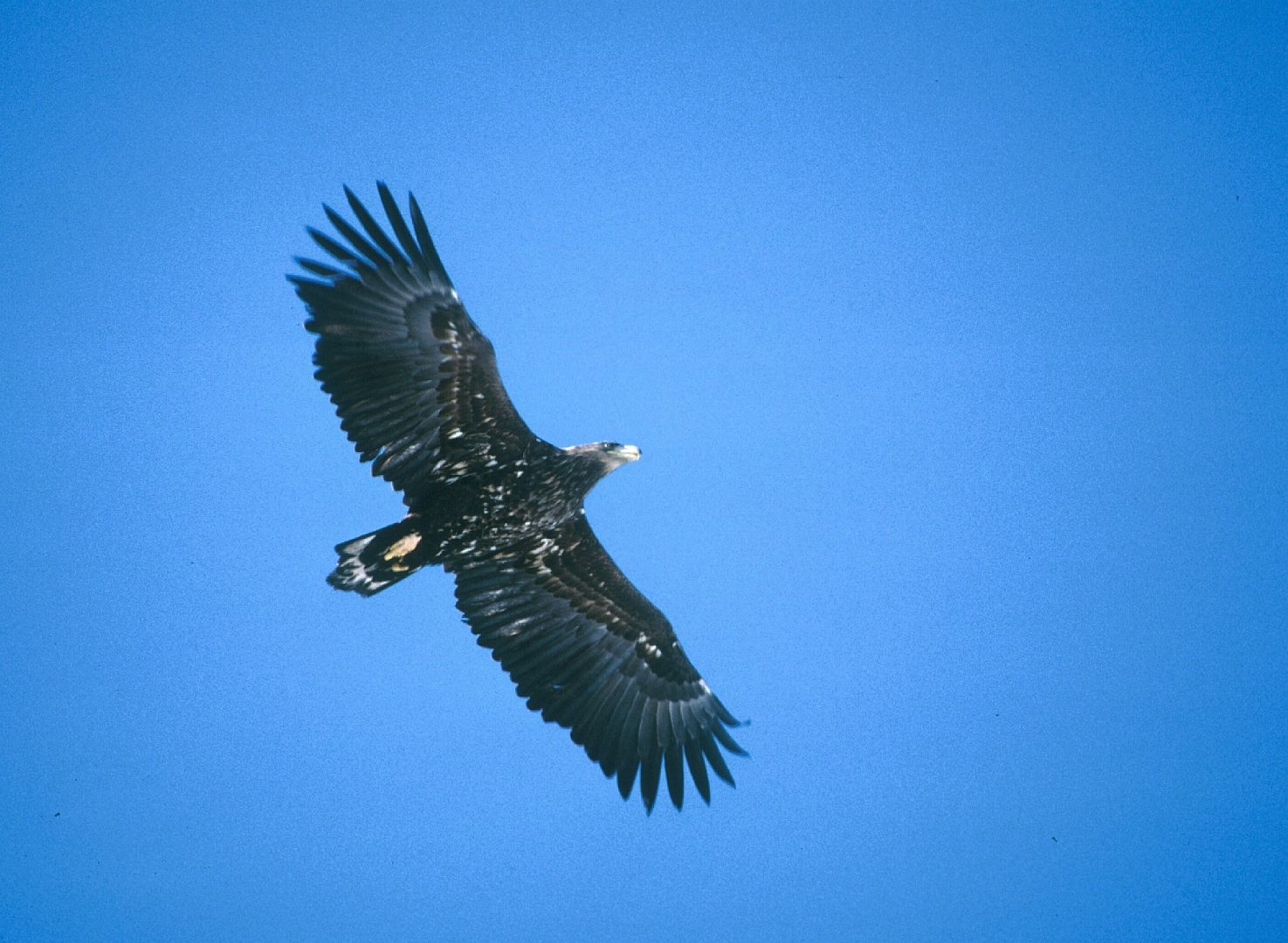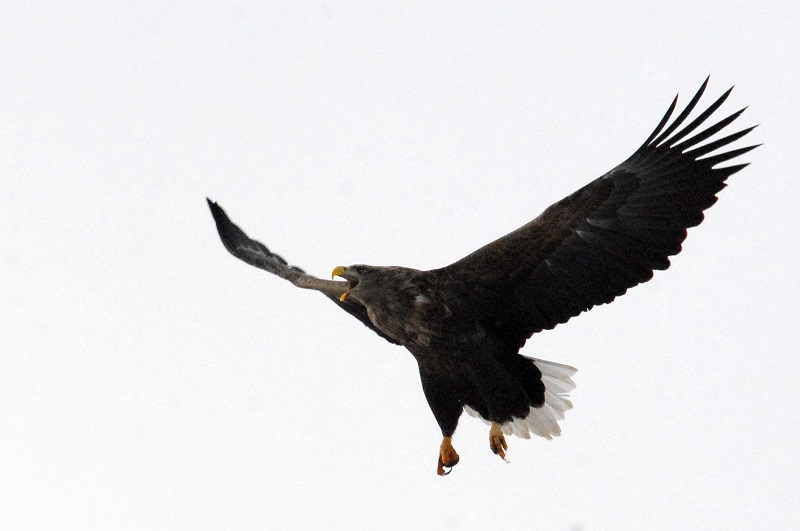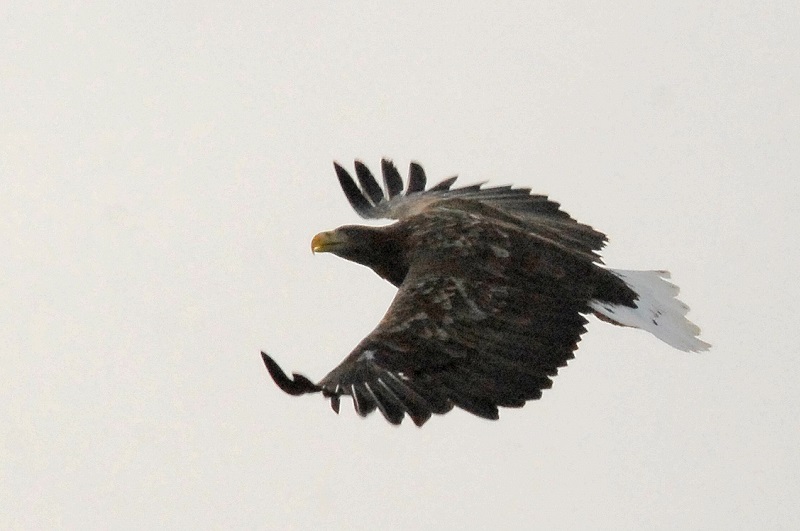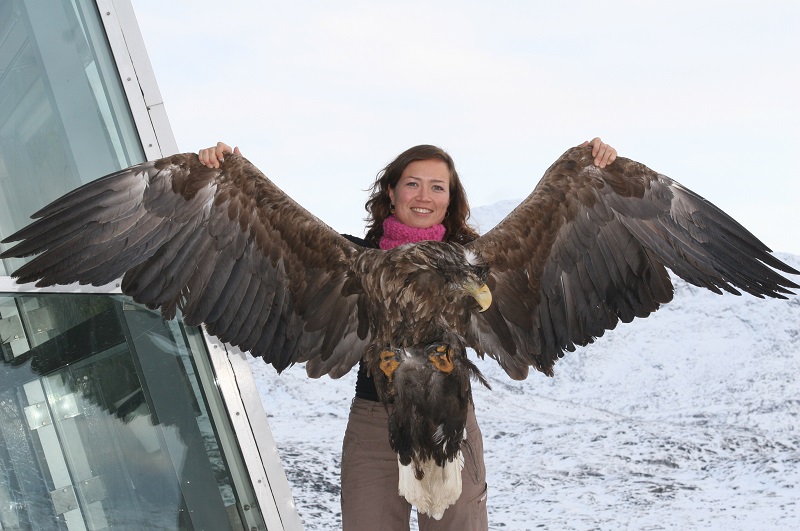Sea eagle
Haliaeetus albicilla

Photo: Lars Witting.
Greenland’s largest bird. Belongs to the birds of prey.
Characteristics: The Greenlandic sea eagles are larger than elsewhere within the species’ range. The white-tailed eagle is also widespread in Iceland and in Norway and Eastern Europe, to the east and all the way to Kamchatka. In Denmark, the white-tailed eagle re-immigrated in 1995 after being completely extinct and more than 20 pairs now breed here.
Wingspan: 200 cm -245 cm. Females are larger than males.
Weight: 3.1 kg; 6.2 kg
Life expectancy: The longest living sea eagle known from Greenland was 21 years old. The record has a Swedish sea eagle that was still alive after 28 years and 2 months.
Food: Fish, especially mountain trout and uvak as well as gulls, eider ducks, teals, polar foxes and snow hares. Especially young sea eagles take carrion.
Younger bird: Dark tail and dark beak.
Older bird: White tail, light especially on the head and yellow beak. Breeds for the first time as a 4-7 year old.
Laying: Around April 1st. Lays 1-2 eggs. 1 litter annually.
Incubation period and young: Incubate 38 days, the young can fly after 75 days, but are fed for another 40 days.
- Old Sea Eagle with white tail over Nuuk, October 2008. Photo: Lars Maltha Rasmussen.
- Biologist Aili Lage Labansen keeps a dead sea eagle. Photo: Lars Maltha Rasmussen.
Distribution
The white-tailed eagle is found from Greenland in the west through northern Europe and Asia to the Bering Strait in the east. The closely related White-headed Sea Eagle is found in North America.
In Greenland, the white-tailed eagle breeds on the southern part of the west coast from Nunap Isua / Kap Farvel to the north to Nassuttooq / Nordre Strømfjord. A single breeding couple is known nearby Ilulissat. Most older sea eagles are steadfast birds. Many young birds migrate to South Greenland in the winter.
The white-tailed eagle breeds mainly along the coast, but also inland near lakes and rivers. The nest is built on mountain ledges or on a smaller peak with a good view. The white-tailed eagle probably migrated to Iceland and Greenland after the last ice age 5-8000 years ago.
Current stock size
The total Greenlandic breeding population is estimated at only 150-170 pairs.
Vulnerable periods
Sea eagles are particularly vulnerable to disturbance in the period 1 March to 1 July, where a single prolonged disturbance at the nest can cause the birds to give up a breeding attempt.
Threats
- Illegal hunting
- Poisoning with lead shot which is ingested through food (eg. eider ducks).
- Disturbance at the nest
Protection
Total peace since 1973.





